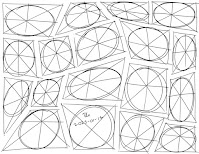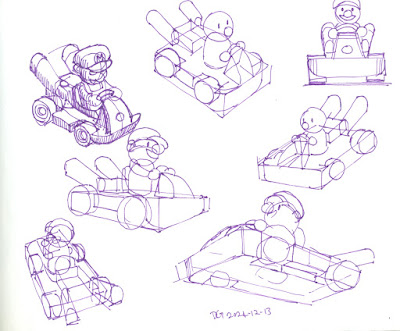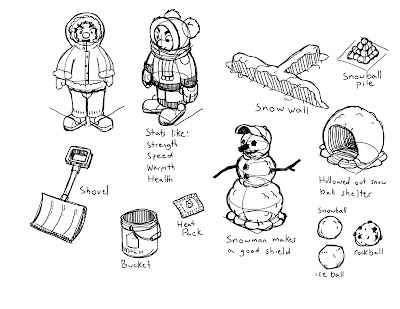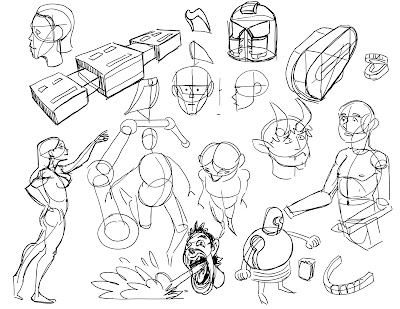In this section we're actually getting to the box part of Drawabox. Exciting!
Lesson 1/6 - Perspective & Projection
- 3D space consists of 3 dimensions, XYZ, and it is easily represented by a box.
- 2D Terms: Shape, Line, Point; 3D Terms: Form, Edge, Vertex.
- Perspective Projection is how we take 3D objects and capture them on the 2D page.
This was a big page - lots to learn here!
- Foreshortening consists of visual cues that tell us how close or far away things are.
- Visual cues include degree of shift in ellipses, object size, and distance between objects.
- Parallel edges converge at a vanishing point.
- Dramatic convergence describes edges that exist in "depth. with a close vanishing point.
- Gradual convergence describes edges that are closer to their "actual" size with a far vanishing point.
- The Horizon Line is the far end of the ground plane, and edges parallel to it will have their vanishing points on it.
- Rotating boxes vanishing points move slowly towards the center, and faster away from the center the more parallel those edges become to the horizon line.
Lesson 1/8 - Rotation, Grids, & Infinity
This was pretty theoretical and hard to wrap my head around, but I'll try to sum it up.
- The horizon line, in a diagram seen from above, is better represented as a circle around the viewer so that the distance from the viewer is equal all the way around.
- As an object turns it's vanishing points travel around the circular horizon line at a constant rate, but once projected back onto a straight horizon line the vanishing points move at different rates.
- A vanishing point at infinity is when an edges vanishing points is parallel to the horizon line.
Lesson 1/9 - Guidelines & 1/10 - Notes
These are some general rules of thumb.
- 1 Point Perspective - 2 axis of the box have vanishing points at infinity.
- 2 Point Perspective - 1 axis of the box has vanishing points at infinity.
- 3 Point Perspective - None of the vanishing points are at infinity.
- If the far ends of a box are considerably smaller than the near ends that box has dramatic foreshortening. If the ends are similar than it shallow foreshortening.
- Dramatic foreshortening is for very large objects or very close to your eye objects.
- Shallow foreshortening is for human size objects, or very far objects.
- Low horizon - you are low to the ground; High horizon - you are high up from the ground.
- Eye line, horizon line, objects horizontal axis typically the same, but not necessarily.
This distortion stuff is kind of tricky, best to look at the diagrams on the Drawabox website.
- Distortion occurs when a box falls outside of the space between it's 2 vanishing points.
- Our picture plane should take up about 60% of our Field of View.
Finally, after all that reading, I got to the homework exercises. This time there are 4! Plotted perspective, rough perspective, rotated boxes, & organic perspective.
Some of these were a real doozy, but felt really good to complete. They made me really pay attention to how lines converge.
Again, here are the 50% drawings.
This was a big section and took me a long time to get through. I'm also realizing that all these exercises are supposed to become warmups for me to do anytime I sit down to draw... I'll have to start doing that because I haven't up until now. The next thing is the 250 box challenge!































































